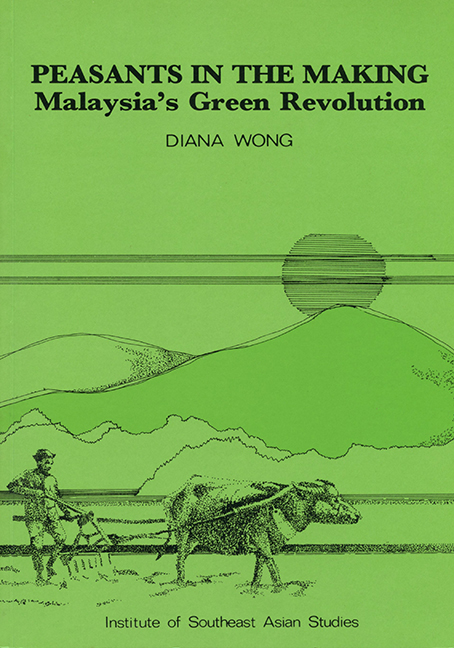Book contents
- Frontmatter
- Contents
- Acknowledgements
- Part I The Framing of the Study
- Chapter 1 The Empirical Setting: The Green Revolution and Muda
- Chapter 2 Peasant Reproduction: A Framework of Analysis
- Chapter 3 The Making of the Muda Region: The Social Organization of Land Colonization
- Part II The Anatomy of the Village
- Part III The Transformation of the Village Economy
- Part IV The Transformation of Village Society: The Unfolding of Social Differentiation
- Part V Conclusion
- Appendix I Research Methodology
- Appendix II Questionnaire
- Bibliography
- THE AUTHOR
Chapter 1 - The Empirical Setting: The Green Revolution and Muda
from Part I - The Framing of the Study
Published online by Cambridge University Press: 21 October 2015
- Frontmatter
- Contents
- Acknowledgements
- Part I The Framing of the Study
- Chapter 1 The Empirical Setting: The Green Revolution and Muda
- Chapter 2 Peasant Reproduction: A Framework of Analysis
- Chapter 3 The Making of the Muda Region: The Social Organization of Land Colonization
- Part II The Anatomy of the Village
- Part III The Transformation of the Village Economy
- Part IV The Transformation of Village Society: The Unfolding of Social Differentiation
- Part V Conclusion
- Appendix I Research Methodology
- Appendix II Questionnaire
- Bibliography
- THE AUTHOR
Summary
INTRODUCTION
In the late sixties, a massive drive to improve agricultural production with the aid of new technology, in particular new varieties of high-yielding grain, was launched in many countries of the Third World. This new phase of “agricultural modernization” and the tremendous changes it wrought in the lives of millions of farmers all over the world soon earned the epithet the “Green Revolution”. By the end of the decade, the “Green Revolution” had reached Malaysian shores as well, unleashing its waves of change most extensively in the traditional rice bowl states of Kedah and Perlis. Beginning in 1970, irrigation facilities made available under the Muda Irrigation Scheme have allowed for the double-cropping there of rice, the food staple of the country.
What has been the Muda experience often years of the “Green Revolution”? How have these changes been felt at the village level? What impact has the adoption of the new technology had on income distribution, labour relations, land tenure and other related issues? How, in short, has the process of agrarian transformation unfolded in this one particular part of the world under conditions, one could say, of peripheral capitalism? These are the questions to which this book addresses itself.
Before descending into the view from the village, which shall come into sharper focus in the following chapters, a review of the literature, comparing the generalizations which have been made for the Muda region to that of other Asian countries, is in order.
THE GREEN REVOLUTION: THE GLOBAL RECORD
It should be borne in mind that the “Green Revolution” is nothing more than a descriptive term covering a wide range of programmes which were undertaken in various countries. The actual form that these programmes took differed, of course, from country to country, but in general, the following five components were found in all such “Green Revolution” programmes:
A technological ‘package’ or recipe produced in scientific research centres and designed to fit the environmental conditions of the region in which it is to be applied;
Arrangements whereby knowledge of this technology could be communicated to cultivators;[…]
- Type
- Chapter
- Information
- Peasants in the MakingMalaysia's Green Revolution, pp. 3 - 14Publisher: ISEAS–Yusof Ishak InstitutePrint publication year: 1987



